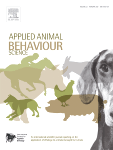Document type: Scientific article published in Scientific Reports
Authors: Britta Schünemann, Judith Keller, Hannes Rakoczy, Tanya Behne, Juliane Bräuer
Preview: When dogs interact with humans, they often show appropriate reactions to human intentional action. But it is unclear from these everyday observations whether the dogs simply respond to the action outcomes or whether they are able to discriminate between different categories of actions. Are dogs able to distinguish intentional human actions from unintentional ones, even when the action outcomes are the same? We tested dogs' ability to discriminate these action categories by adapting the so-called "Unwilling vs. Unable" paradigm. This paradigm compares subjects' reactions to intentional and unintentional human behaviour. All dogs received three conditions: In the unwilling-condition, an experimenter intentionally withheld a reward from them. In the two unable-conditions, she unintentionally withheld the reward, either because she was clumsy or because she was physically prevented from giving the reward to the dog. Dogs clearly distinguished in their spontaneous behaviour between unwilling- and unable-conditions. This indicates that dogs indeed distinguish intentional actions from unintentional behaviour. We critically discuss our findings with regard to dogs' understanding of human intentional action.
Article leading to :
- an article in The Guardian on 1 September 2021 Paws for thought: dogs may be able to figure out human intentions
- an article in Science on 2 September 2021: Does your dog know what you're thinking? New study adds evidence for canine "'theory of mind"'




